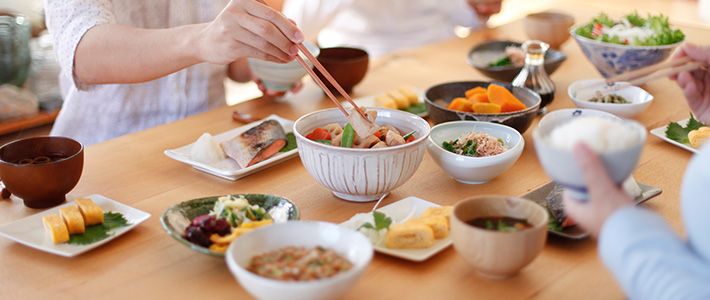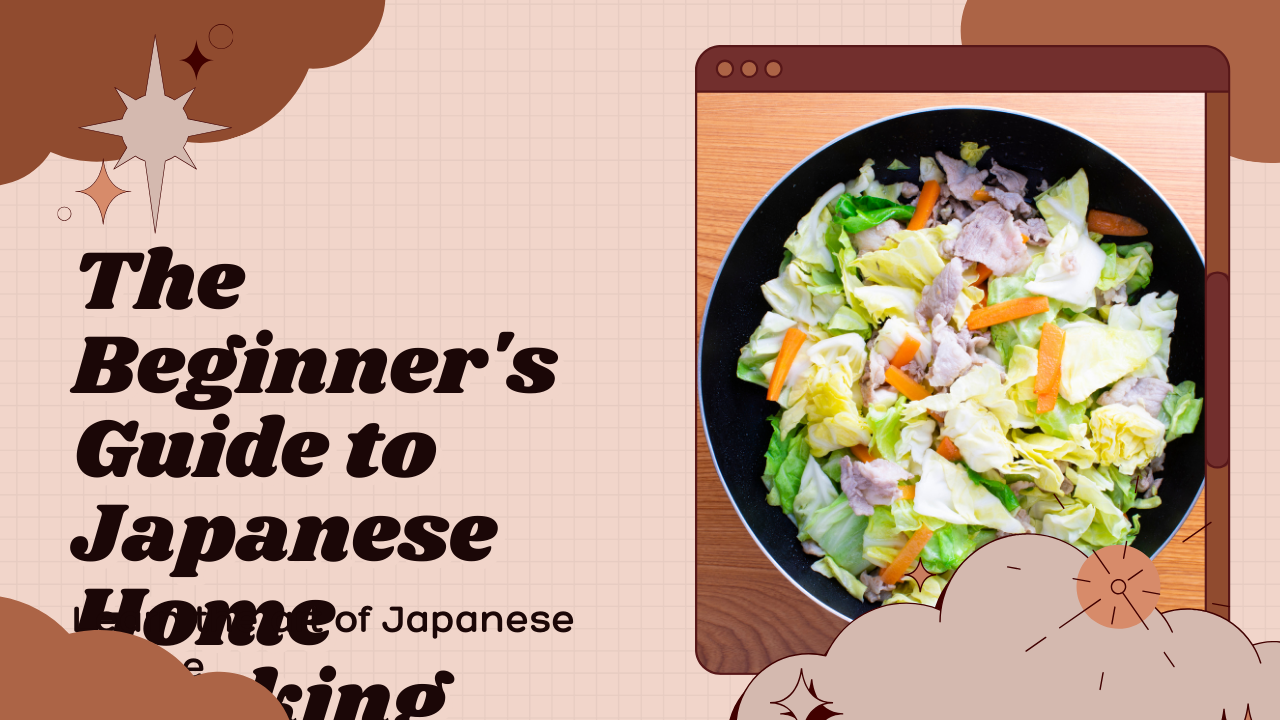Unlocking the Secrets of Japanese Home Cuisine
In a world dominated by global flavors, there’s an undeniable allure to the simplicity and elegance of Japanese home cooking. Whether you’re a kitchen novice or a seasoned chef, embarking on a journey into the heart of Japanese culinary traditions promises a rewarding experience. This beginner’s guide will not only demystify the art of Japanese home cooking but also provide you with practical tips and insights that will have you creating authentic and delicious dishes in no time.
Embracing the Umami Revolution
Japanese cuisine is renowned for its umami-rich flavors, a term that transcends the mere taste of savory. Think of umami as the symphony of flavors that dance on your palate, elevating every bite to a culinary masterpiece. In this section, we’ll delve into the essence of umami, exploring its role in Japanese home cooking and unveiling the secrets to unlocking this fifth taste sensation.

Essential Ingredients for Your Japanese Pantry
Building a solid foundation for your Japanese culinary adventure starts with the right ingredients. From miso paste to dashi stock, we’ll guide you through the must-haves in your pantry. Uncover the subtleties of soy sauce, the versatility of mirin, and the umami bomb that is bonito flakes. Our journey into the world of Japanese home cooking begins with understanding and selecting these fundamental ingredients.
Mastering the Art of Sushi at Home
Sushi, a global culinary sensation, has its roots deeply embedded in Japanese home kitchens. Learn the art of crafting perfect sushi rice, selecting the freshest fish, and mastering the delicate balance of flavors in your homemade sushi rolls. We’ll share insider tips and tricks that will have you impressing friends and family with your sushi-making prowess.

Navigating the Japanese Kitchen: Tools of the Trade
Equipping your kitchen with the right tools is paramount to mastering Japanese home cooking. From the traditional Japanese chef’s knife to the indispensable rice cooker, we’ll guide you through the essential tools that will make your culinary journey smoother and more enjoyable.
Diving into the World of Bento Boxes
Bento boxes are a hallmark of Japanese culinary culture, showcasing a meticulous blend of flavors, colors, and textures. Discover the art of creating visually stunning and nutritionally balanced bento boxes that are not only delicious but also a feast for the eyes. Unleash your creativity in assembling these portable, compartmentalized meals for a taste of Japan on the go.
Exploring Regional Flavors: From Hokkaido to Okinawa
Japan’s diverse landscapes and climates have given rise to regional culinary specialties. Take a culinary journey across the archipelago as we explore the unique flavors of Hokkaido’s seafood, Kyoto’s refined kaiseki, and Okinawa’s tropical influences. Uncover the regional nuances that add depth and variety to Japanese home cooking.

Demystifying the Japanese Tea Ceremony
The Japanese tea ceremony, or “chanoyu,” is a ritualistic celebration of simplicity, mindfulness, and hospitality. Delve into the world of matcha and learn how to perform a basic tea ceremony in the comfort of your home. Experience the calming influence of this centuries-old tradition, connecting mind, body, and spirit through the art of tea.
Savoring the Sweet Side of Japan: Traditional Desserts
No culinary journey is complete without indulging in the delightful world of Japanese desserts. From delicate mochi to the elegant artistry of wagashi, we’ll explore the sweet side of Japanese home cooking. Unearth the secrets behind creating these delectable treats that perfectly balance sweetness with the subtle flavors inherent in Japanese culinary culture.
Cultural Etiquette in Japanese Dining
Japanese dining etiquette goes beyond the realm of taste, encompassing a rich tapestry of cultural norms and traditions. Learn the nuances of proper table manners, the significance of slurping noodles, and the art of expressing gratitude through your dining experience. Embrace the cultural aspects that elevate Japanese home cooking to a holistic and immersive culinary adventure.

Elevating Your Home Cooking with Japanese Culinary Arts
In this final section, we’ll tie everything together, offering tips on honing your skills and expanding your repertoire. From attending virtual cooking classes to exploring Japanese cookbooks, we’ll guide you on a continuous journey of improvement and exploration. The path to mastering Japanese home cooking is a dynamic one, and we’ll leave you inspired to continue evolving in your culinary pursuits.
Conclusion: A Culinary Odyssey Awaits You
Embarking on the journey of Japanese home cooking is not just about mastering recipes; it’s a cultural odyssey that connects you with centuries-old traditions and flavors. As you navigate the umami-rich landscapes of Japanese cuisine, remember that the true essence lies not just in the ingredients but in the passion and love you infuse into every dish. So, roll up your sleeves, sharpen your knives, and let the flavors of Japan transport you to a culinary haven.
FAQs: Unraveling Common Queries
Can I substitute ingredients in Japanese recipes?
While some substitutions are possible, authentic Japanese flavors often rely on specific ingredients. Experiment cautiously, and embrace the journey of discovering the nuances of traditional components.
Is it necessary to use a sushi mat for making sushi rolls at home?
A sushi mat makes the process easier, but you can improvise with a kitchen towel or plastic wrap. The key is achieving a tight roll to ensure your sushi holds together.
Are there vegetarian options in Japanese home cooking?
Absolutely! Japanese cuisine offers a variety of vegetarian dishes. Explore the world of vegetable tempura, miso soup with tofu, and delicious vegetable-filled sushi rolls.
How do I choose the right rice for Japanese dishes?
Opt for short-grain Japanese rice for its sticky texture, ideal for sushi and other traditional dishes. Look for labels like “sushi rice” or “Japonica rice” when shopping.
Can I freeze Japanese dishes for later consumption?
Some dishes freeze well, while others may lose their texture. Soups, stews, and certain rice dishes typically freeze better than delicate items like tempura. Experiment and find what works best for each dish.
References: Digging Deeper into Japanese Culinary Wisdom
- Japan Centre. (https://www.japancentre.com/)
- Just One Cookbook. (https://www.justonecookbook.com/)
- The Japanese Kitchen by Kimiko Barber
Remember, the joy of Japanese home cooking lies not just in the outcome but in the delightful journey of discovery. We encourage you to explore, experiment, and savor every moment in your kitchen as you embark on this flavorful adventure. Happy cooking!















Leave a Reply